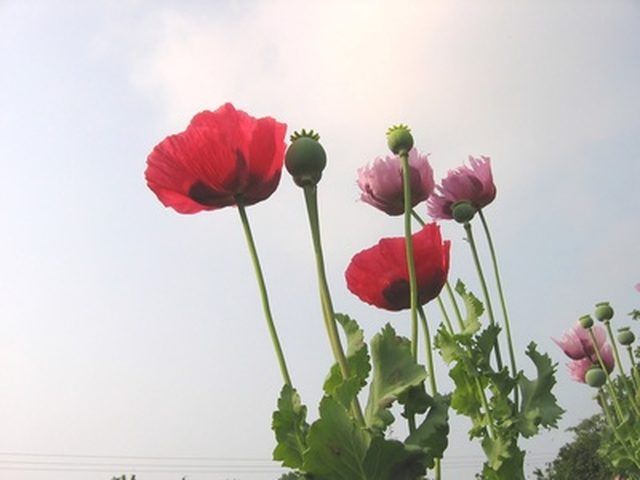Bulbs
Flower Basics
Flower Beds & Specialty Gardens
Flower Garden
Garden Furniture
Garden Gnomes
Garden Seeds
Garden Sheds
Garden Statues
Garden Tools & Supplies
Gardening Basics
Green & Organic
Groundcovers & Vines
Growing Annuals
Growing Basil
Growing Beans
Growing Berries
Growing Blueberries
Growing Cactus
Growing Corn
Growing Cotton
Growing Edibles
Growing Flowers
Growing Garlic
Growing Grapes
Growing Grass
Growing Herbs
Growing Jasmine
Growing Mint
Growing Mushrooms
Orchids
Growing Peanuts
Growing Perennials
Growing Plants
Growing Rosemary
Growing Roses
Growing Strawberries
Growing Sunflowers
Growing Thyme
Growing Tomatoes
Growing Tulips
Growing Vegetables
Herb Basics
Herb Garden
Indoor Growing
Landscaping Basics
Landscaping Patios
Landscaping Plants
Landscaping Shrubs
Landscaping Trees
Landscaping Walks & Pathways
Lawn Basics
Lawn Maintenance
Lawn Mowers
Lawn Ornaments
Lawn Planting
Lawn Tools
Outdoor Growing
Overall Landscape Planning
Pests, Weeds & Problems
Plant Basics
Rock Garden
Rose Garden
Shrubs
Soil
Specialty Gardens
Trees
Vegetable Garden
Yard Maintenance
Facts About the Poppy Flower
Facts About the Poppy Flower. Poppy flowers are native worldwide and have been prized not just for their stunning beauty bur for their medicinal history as well. Prior to the production of heroin and subsequent legal restrictions opium was one of the only medicines effective against pain and was used as such for centuries. Today, some of the other,...

Poppy flowers are native worldwide and have been prized not just for their stunning beauty bur for their medicinal history as well. Prior to the production of heroin and subsequent legal restrictions opium was one of the only medicines effective against pain and was used as such for centuries. Today, some of the other, non-narcotic members of this family are amongst the most coveted by horticulturists.
Uses
Papaver somniferum or oriental poppy is the only member of the poppy flower family that produces opium and it is illegal in the United States to grow this species. Teas prepared from other members of the poppy family are said to have a sedating effect. Poppy seeds are commonly used in pastries. Some dyes can be prepared from poppy flowers.
By far the most common use of the poppy flower family today is for ornamental gardens. These relatively easy to grow flowers produce vibrant colors that can highlight any garden.
Symbolism
Texas Agrilife's Aggie Horticulture lists the meanings of specific colors of poppies in a bouquet. In general, the poppy flower symbolizes eternal sleep, oblivion and imagination. A red poppy denotes pleasure, a white poppy is used to console and a yellow poppy can signify wealth and success.
The poppy flower can also symbolize beauty, fertility and eternal life. It was a funeral flower for the ancient Egyptians and used as a shrine flower by the Greeks.
Growing
Grown as annuals, poppy flower seeds can be scattered over a loose bed in direct sunlight towards the end of autumn. Keep them moist, but do not over-water. Poppy flowers prefer rich well-drained soil. Because of their need for direct sunlight, they do not make a good candidate for a houseplant. Poppy flowers will self-sow which means you may not have to re-plant them next year. However, pruning old flowers offer a better showing overall.
California Poppy
The California poppy flower is between 2.5 and 5 centimeters in width and is usually orange in color. The flower has four petals in the fan shape typical of poppy flowers. The plant itself can grow to 60 centimeters tall. They can be found in Southern California, the Mojave desert and even in Northwest Baja. It is the state flower of California and its folk-lore goes back to the 1800s when explorers noted the golden hillsides of California.
Himalyan Blue Poppy
The Himalyan Blue poppy flower, Meconopsis, is one of the most prized in the poppy flower family for its true blue colored blooms. This member of the poppy flower family is particularly sensitive to temperature changes and therefore can be difficult to grow. Found mostly in the Scottish highlands and Himalayas, they have been successfully grown in Alaska and coastal Washington. Their optimum temperature range is 50 to 60 degrees Fahrenheit.